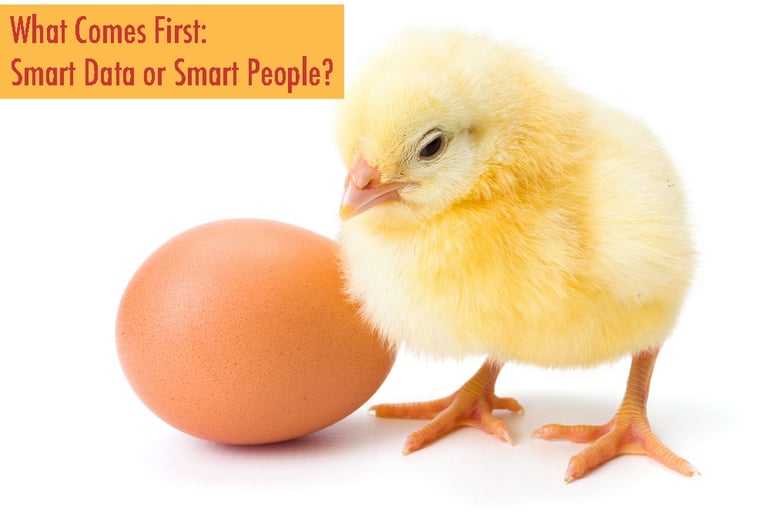
What Comes First?
Determining the reason why two restaurant reporting numbers are different can be a real challenge, like the chicken or the egg. In this era of big data, many restaurant companies are racing to improve their use and comprehension of the data they have locked up in their system silos. But, the question for this post is: Does data make people smarter or is it the other way around?
In 2017, same-store sales of all restaurants fell by -1.1% according to TD2NK and their Black Box Intelligence index. This index is computed on data from 30,000 restaurants, so it is a pretty good aggregation of data - about 5% of the restaurant industry. In this population, I think it is fair to say that some of the companies use their data aggressively and some do not.
Mirus Restaurant Solutions also has an index made up of data shared by their clients. This index is computed on data from 5,000 restaurants, so it is a little less than 1% of all restaurants.
In 2017, the Mirus same-store index increased by 0.54%, that is an increase of 164 basis points compared to the industry overall. Who wouldn't want to see their revenue growth improved by 164 basis points? And what causes Mirus clients to achieve better sales performance year after year? Is it Mirus that improves the performance of a company, or is it the case that smart people capable of delivering superior performance know they need a platform for their data like Mirus Enterprise?
We have been measuring the difference between Mirus Index and the other popular industry benchmarks for several years, and routinely Mirus clients outperform the industry by 100 to 400 basis points most of the time.
Why The Difference?
So these numbers are different, and most of the time the index of Mirus clients outperforms the benchmarks for the overall restaurant industry. But WHY? It could be that Mirus clients learn how to use their data more effectively to drive performance by virtue of the tools Mirus provides. Or, it could be that the people who work at the companies who use Mirus are really smart and they know that the Mirus Enterprise platform will give them the tools for analyzing and understanding what the data is telling them.
It is likely a combination of both. But, there is one thing that Mirus clients share; a commitment to make well-informed decisions instead of relying on intuition and experience. Not long ago, there was relatively little data available to analyze without a lot of data collection, cutting, pasting and organizing it all. In a blink of an eye seemingly, the world of restaurant data exploded and today most companies have much more data than they can examine. Companies are challenged with adjusting how they use all of this data.
We call the journey from the old world of data to this new world the Information Learning Curve. It is a journey of learning and discovery. If your staff knows how to analyze data creatively, they need the data organized so they can study it in new and unique ways every day. If your staff does not yet have the skills to perform ad-hoc analysis of the data, they will need more than just technology. They will need training and coaching through their journey.
If you are not happy with the performance of your company I encourage you to consider how well your team is using data. Are they using all of it? Are they relying on summaries or diving into the full details (caution to anyone still using only summarized data - lookup Simpson's Paradox)?
In the meantime, a shout out to all of the companies using Mirus. You are ahead of your peers and the results clearly show you are driving performance well beyond the industry norms. Congrats!
Thoughts?
Do you believe smart people observe data well? Or that Well organized reporting data can make anyone a better decision-maker?
About Mirus:
Mirus is a multi-unit restaurant reporting software used by operations, finance, marketing, and IT.
For more information, please visit: www.mirus.com
If you enjoyed this blog, please share it by using the social buttons at the top and make sure to leave your thoughts in the comment section below.








.png?width=50&height=50&name=Mirus%20Logo%20(1).png)